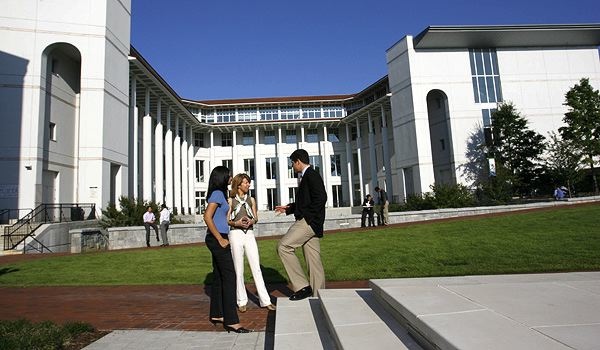
Emory’s Goizueta School of Business
SCHOOL EXPECTS CONCENTRATIONS TO INCREASE INTEREST & ENROLLMENT

Doug Bowman, senior associate dean for working professional MBA programs
The ability to take a deep dive in a subject area, believes Bowman, will likely convince more would-be applicants to enroll. “We were talking to prospects who were not moving through the funnel and they often said they weren’t sure they needed the full bite of a lockstep EMBA program. Yet, they would say they were getting scared seeing graduates of specialized master’s programs coming into their companies all tuned up in a functional area. We can now give them access to the cutting-edge finance electives.”
The benchmarking exercise confirmed that some of the newer EMBA programs had already moved to the new redesign of the Goizueta experience. “We were most impressed with some of the changes made by Yale and Berkeley,” says Kazanjian. “They are both moving to a smaller core, more electives and the opportunity for concentrations that are aligned with faculty expertise.”
Yet, students also told the school they wanted to stay in their cohorts as long as possible to get the full benefit of creating relationships with classmates that would endure well after the program was over. “So we have tried to keep the cohort experience through the first three terms and a number of electives are EMBA-only electives,” says Bowman. “That’s because students have invested in relationships with their fellow students and they don’t want to lose that.”
MORE EXPERIENTIAL LEARNING PUT INTO THE PROGRAM
The research also showed that students valued the lockstep experience as long as it was not long-lived. “If you are going to have a lockstep program it needs to be really short because once you get to a certain length, students want more flexibility in choosing and customizing their own curriculum,” adds Bowman.
Another goal of the redesign was to make the EMBA program more similar to a full-time MBA experience. “In the redesign, we tried to build in experiential learning oportunities that mirror what we are doing in the full-time space,” adds Kazanjian. “We call it management practice and all students get a real company problem to work on. That is now a full course. They still have an international trip, but we are trying to put a project into that as well. And we also have a five-day course in Washington, D.C. The early feedback is that it is pretty responsive to their needs for choice and flexibility.”
One change they didn’t adopt was to move distance learning into the program. Goizueta already has a modular 20-month, hybrid program executive program that includes nine on-campus residences with 35% of the coursework delivered online. But after some experimenting with online courses in its alternating weekend program, the school concluded that students really had signed up for more traditional classroom learning and didn’t want to take a class on a computer.
EMBA STUDENTS PREFERRED FACE-TO-FACE INTERACTION OVER DISTANCE LEARNING
“There is still a subset of folks who really prefer face-to-face interaction with colleagues and with faculty,” says Kazanjian. “We tried in this weekend format to reduce the number of weekends and had two or three classes online. The vast majority of students wanted to be here and to interact with each other. And they wanted to come to our campus so they wouldn’t be distracted by work and family pressures. Central to our value proposition is an intimate learning environment. So we do lots of hands-on stuff in the way we do these projects and the way students have access to faculty. There is a demand for that kind of experience.”
Another innovation Bowman is experimenting with are three-day modules, allowing students to meet Thursday through Saturday, devoted to a specific subject. The design was in response to the MDs who are in Goizueta’s more structured lockstep modular program. The modules, essentially deep dives in healthcare areas such as regulation, strategy, quality management and economic models, are held before or right after a residence to allow a healthcare concentration in the modular offering.
The redesign debuts with the Class of 2018 for students who will enter in the fall of this year. Goizueta is also opening up some options for the current Class of 2017, while telling the second-year EMBA students that they can come back and take as many electives as they want after they graduate. With the redesign, the school expects to increase the size of its incoming cohort to 60 students from the current 50. Goizueta is keeping the price of its EMBA at $110,000 but now is including the residences in that price.
Students also have the flexibliity to complete the program as quickly as 15 and one-half months, by taking four or five courses for each of the four semesters. But Bowman expects most students to go through the fifth semester, taking a lighter load of three courses per semester.
DON’T MISS: ONE-ON-ONE WITH GOIZUETA DEAN ERIKA JAMES





Questions about this article? Email us or leave a comment below.